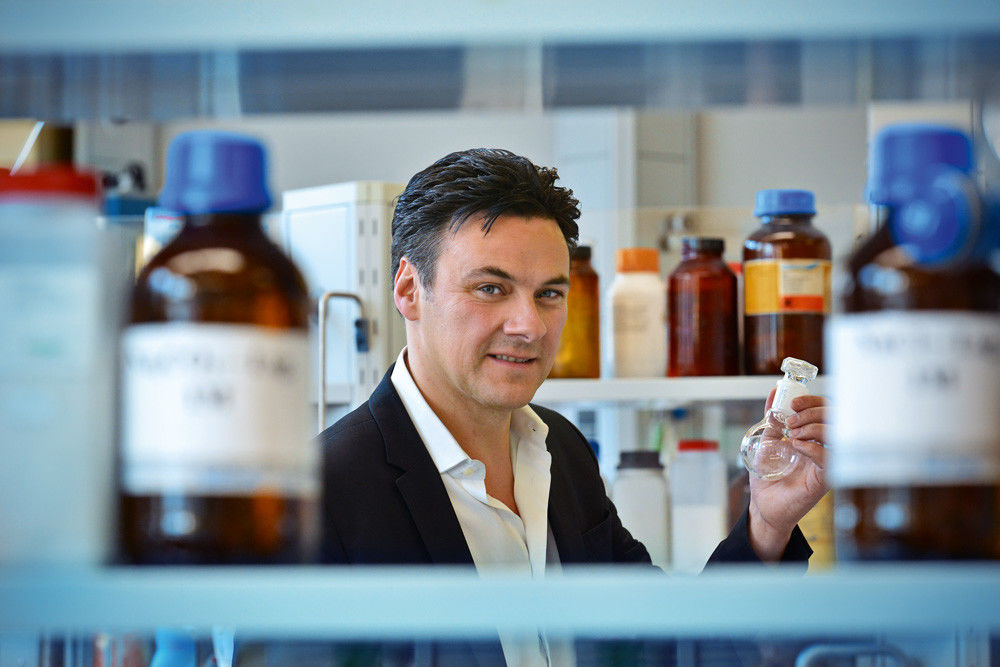Targeting tropical diseases

Parasitologists, structure biologists and drug researchers from five European countries, Brazil and Australia are developing new drug candidates to treat tropical diseases. Professor Wolfgang Sippl and his research team are taking part in the research project “A-PARADDISE” that is receiving six million euros in EU funding - 250,000 euros of which is going to Halle.
“Tropical diseases are not forgotten diseases,” Sippl clarifies. These are “neglected diseases” that have a very low incidence rate, in other words, the number of new patients with these diseases is less than 100,000 worldwide. Such tropical diseases include schistosomiasis and leishmaniasis. In this international research project, which is designed to last three years, researchers are also studying more well-known diseases, like malaria or the sleeping disease, which a greater number of patients contract.
“I’m not even a specialist in tropical diseases,” reveals the professor of pharmacy before he touches on his role in the project. His areas of research include computer-based drug design and the development of pharmaceutical leads for so-called epigenetic targets. These are biomolecules to which an active ingredient can be attached. “Our task is to design such molecules. We model ideas on the computer, create new structures and models whose substances are later synthesised in the lab and then test these in terms of their effectiveness. “Epigenetics itself,” explains Sipple, “deals with the processes that ensure only specific information from the genetic code is read.” Every cell in an organism contains all of its genetic information in the form of DNA, however only specific information is retrieved depending on the cell’s function.
Thus epigenetics conceptionally provides fully new methods of understanding development and disease processes. The good news: “Epigenetic regulation not only plays a role in the development of human cells, it can also be used for the cell development of, for example, parasites.” It is precisely this knowledge that is used in developing new medicines for treating schistosomiasis. “There is already a drug on the market called Praziquantel, however it is the only one that has been approved. Once resistance develops, something that frequently happens with microorganisms when treated with the same drug over a longer period of time, we have a problem. There’s no alternative medicine,” says the Halle resident who is working with his research team to sound out ways to causally eliminate the pathogen.
He and geneticists working on the project have taken a close look at the parasite’s genome. The pathogen of schistosomiasis is a small worm called a schistosoma, or “blood fluke”. Its larva penetrate intact human skin, mature and later migrate to the liver where the females settle in a long longitudinal fold on the stomach of the males. Together the blood flukes migrate to veins in the intestines and settle there. “The flukes multiply in bodies of water in a snail as well as in the human body. And they have a unique way of life,” the scientist explains. Their distinctive feature is that the males and females cannot exist without one another. “They can only survive as couples.” A lot can be derived from this information. If newly developed drugs can stop their pairing, they would automatically die and relieve their host. A new such drug has already been found in an initial EU research project called “Schistosoma Epigenetics – Targets, Regulation, New Drugs”. Its effectiveness in humans has yet to be confirmed.
“The know-how we have acquired in this area was recently the deciding factor in why we were accepted into the consortium,” the 48-year-old says. The nucleus of the team of researchers from Freiburg, Halle, Strasbourg and the Louis Pasteur Institute in Lille (France), from where everything is coordinated, was already active in the initial project phase from 2010 to 2013. EU-funded projects looking at tropical diseases require that a part of these projects go to countries where these diseases are manifested.
This means South America, Southeast Asia and Africa. It was particularly helpful that the Pasteur Institute in Lille has had well established ties with South America where there is a focus of research on schistosomiasis. In the initial project round there were eight partners. Now eight more research groups have been added. It is difficult to estimate how the research cycles will go. “We are unable to say ‘we’ll develop a drug in three years.’ However we have filtered out drug candidates in the first three years that we now want to optimise,” says Wolfgang Sippl confidently.
Written by Michael Deutsch
Kontakt:
Prof. Dr. Wolfgang Sippl
Medizinische Chemie
Tel.: 0345 5525040
E-Mail schicken
